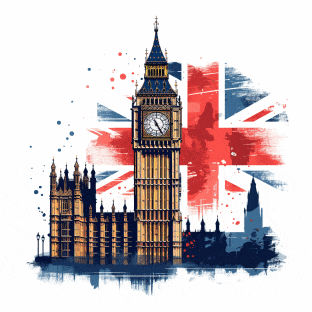Learning English can be particularly challenging when it comes to understanding the most confusing phrasal verbs. Phrasal verbs are combinations of verbs with one or more prepositions or adverbs, which often result in a meaning that differs from the original verb. Beginners and even advanced English learners frequently encounter difficulties with them.
What Are Phrasal Verbs?
Phrasal verbs are an integral part of the English language, often used in everyday conversation. A phrasal verb consists of a verb plus a preposition (e.g., ‘look up’), an adverb (e.g., ‘give up’), or both. Each combination generates a unique meaning, which can be drastically different from the meanings of the individual components. For instance, the verb ‘take’ combined with the preposition ‘off’ becomes ‘take off’, meaning to remove clothing or to ascend in a plane.
What's your English level?
Discover your level now: A1/A2/B1/B2/C1/C2 and GET your certificate!
Why Are They Confusing?
The complexity of phrasal verbs lies in their idiomatic nature. Unlike regular verbs, their meanings often cannot be deduced from the words themselves. Additionally, many phrasal verbs have multiple meanings. For example, ‘turn off’ can mean stopping something like a machine or appliance, or it can mean to cause someone to lose interest. This disparity contributes to why phrasal verbs are among the most confusing elements of English for learners.
Commonly Confusing Phrasal Verbs
Below is a list of some commonly confusing phrasal verbs, their meanings, and example sentences:
| Phrasal Verb | Meaning | Example Sentence |
|---|---|---|
| Break down | To stop functioning (usually a machine) | The car broke down on the highway. |
| Bring up | To mention a topic | He brought up the issue during the meeting. |
| Call off | To cancel | The event was called off due to rain. |
| Look after | To take care of | Can you look after my cat while I’m on vacation? |
| Run into | To encounter unexpectedly | I ran into an old friend at the market. |
Tips for Mastering Phrasal Verbs
Mastering phrasal verbs takes time and practice. Here are some tips to help:
- Practice regularly: Write sentences using different phrasal verbs to understand their usage better.
- Use flashcards: Create flashcards for each phrasal verb, including definitions and example sentences.
- Engage in conversations: Try to use phrasal verbs in conversations with friends or language partners to get comfortable with them.
Consistently incorporating phrasal verbs in both spoken and written English will make you more fluent and natural-sounding. For a comprehensive understanding, consult extensive English dictionaries or online resources dedicated to phrasal verbs.
Resources for Further Learning
To expand your knowledge of phrasal verbs, consider exploring online courses, textbooks, or language exchange programs. Many educational platforms provide interactive exercises and quizzes, which can bolster your learning. Additionally, you can check your English level using the GET Global English Test.
By using resources and practicing diligently, you can become proficient and confident in using even the most confusing phrasal verbs in the English language.
Examples of Phrasal Verbs in Context
Understanding how phrasal verbs are used in context can greatly enhance your comprehension. Let’s look at a few examples:
- Break up: To end a relationship. Example: Sarah and John decided to break up last week.
- Turn on: To start a machine or device. Example: Please turn on the air conditioning; it’s getting hot.
Importance of Learning Phrasal Verbs
Mastering phrasal verbs is essential for achieving fluency in English. They are prevalent in spoken language, formal writing, and informal communication. Neglecting to learn phrasal verbs can hinder your ability to fully understand and express yourself in English.
Q&A: How Can I Remember Phrasal Verbs More Effectively?
Remembering phrasal verbs can be challenging due to their varied meanings. Some effective techniques include:
- Creating mnemonic devices.
- Practicing through real-life scenarios.
- Regularly reviewing and using phrasal verbs in context.
Statistics on Phrasal Verb Usage
Research indicates that phrasal verbs make up a significant portion of spoken English. Native speakers use them frequently in daily conversations, making it imperative for English learners to familiarize themselves with these expressions.
Case Study: Impact of Phrasal Verbs on Language Proficiency
A study conducted on language learners showed that those who actively practiced and incorporated phrasal verbs into their vocabulary exhibited higher levels of language proficiency compared to those who avoided or struggled with phrasal verbs.
Exploring Advanced Phrasal Verbs
For learners wanting to challenge themselves further, delving into advanced phrasal verbs that are less commonly used can broaden their linguistic skills and deepen their understanding of English idiomatic expressions.




